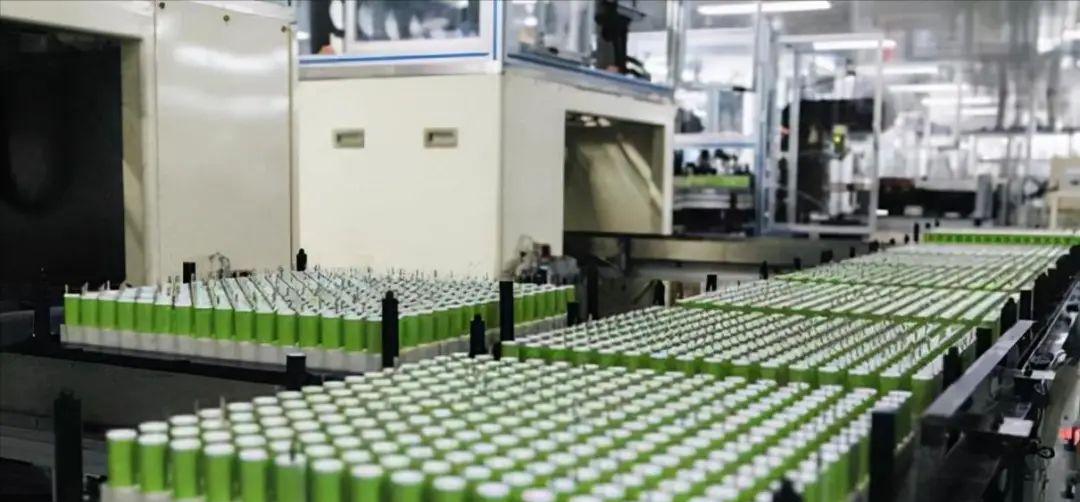
In recent days, a number of battery companies have exposed the news of the price increase of the car power battery, although the battery price increase mainly involves the commercial vehicle industry, but there are still people who are worried that the battery will not be as "panicked" as the chip?
In my opinion, this fear is necessary.
As early as last year, some people predicted that auto parts might have hidden dangers of supply cuts, but no one expected that the car would be knocked down by a small chip. In 2020, a head independent car company had predicted that batteries might be sought-after goods, so it hoarded a large number of batteries, and as a result, in 2021, it encountered a chip shortage, and the situation forced the chairman of this car company to lead the team to another private car company in the south direction to borrow chips.
The two things seem to be accidental, but there is a common problem behind it, and the car is beginning to shift from the demand problem of the past to the supply problem. To put it bluntly, the headache for car companies has changed from "how to sell" to "how to build".
Answering the reason for the increase in battery prices, the reason given by the person in charge of a raw material company is to the point, that is, everyone focuses on the terminal electric vehicle market and does not pay attention to the supply-side contradiction caused by the demand radiation to the upstream of the material. For all enterprises in the industrial chain, price increases are not good for anyone. Because the long-term price increase brings about the imbalance between the supply and demand of raw materials, it disrupts the supply order of the entire battery industry.
In addition to the supply imbalance caused by the price increase, it is also forcing the upstream and downstream enterprises of batteries to find a way out from the technology and business model. Due to a series of reasons such as carbon emissions and energy, the electric vehicle industry chain must optimize the industrial technology system, improve the remanufacturing and recycling development capabilities of the industrial chain, and cannot rely on a single-line procurement relationship to solve supply-side problems.
The series of chain reactions brought about by the price increase of batteries are typical supply-side reform problems.
The so-called supply-side structural reform refers to adjusting the economic structure, achieving optimal allocation of factors, and improving the quality and quantity of economic growth. Unlike the development momentum of the demand side around the "investment, export, consumption" troika, the supply side focuses on labor, land, capital, system creation, innovation and other elements. From the perspective of economic logic, the "troika" is only a part of the economic composition, which is a short-term driving force on the demand side to cope with macroeconomic fluctuations, and is only the result of economic growth rather than the cause. The "three engines" of institutional change, structural optimization and factor upgrading (corresponding to reform, transformation and innovation) are the fundamental driving forces of economic development.
China's automobile market development for more than 30 years, in the demand side of the training of pure fire skills, what the people want, enterprises to create, a policy can interpret 10,000 business opportunities. It is precisely because of the sensitivity to the demand side that Chinese cars have developed the inertia of making "fast money": what is good to do, always want to be a pig on the outlet.
A few days ago, Sun Lijian, deputy dean of the School of Economics of Fudan University, who has long studied supply-side reform, said in a private exchange that if the state continues to promote real estate development, China's economy can reach a growth rate of 8.4%, but the state has let go of the 2.4 economic growth point, the purpose is to require the overall economy to get out of the virtual to the real. In his view, supply-side structural reform is to start from improving the quality of supply, use reform methods to promote structural adjustment, correct the distortion of factor allocation, expand effective supply, improve the adaptability and flexibility of the supply structure to changes in demand, improve total factor productivity, better meet the needs of the broad masses of the people, and promote sustained and healthy economic and social development.
From the chip shortage to the battery price increase, we should see that the car still has a long way to go in the supply-side structural reform. In the past, the automobile industry was accustomed to using money to solve all problems, and the Evergrande case has vividly told us that money cannot solve all problems. It must be admitted that Chinese automobiles have entered the era of supply-side reform from the demand side. In the future, the upstream and downstream of the automobile should start from institutional innovation, technological innovation, and supply-side innovation, and only by solving the contradictions on the supply side can we completely meet the needs of consumers, otherwise what is missing today is chips and batteries, and tomorrow it is possible to worry about a screw.
All reforms must start from ourselves. As media people, we should also change our evaluation thinking. In the past, when evaluating a car company, everyone always liked to focus on the company's production capacity, sales volume, financing scale and sales channels. In the future, we should pay more attention to tapping the technology, system and efficiency capabilities of enterprises, especially in the supply-side structural innovation, and we should be more sobering for the automobile industry.